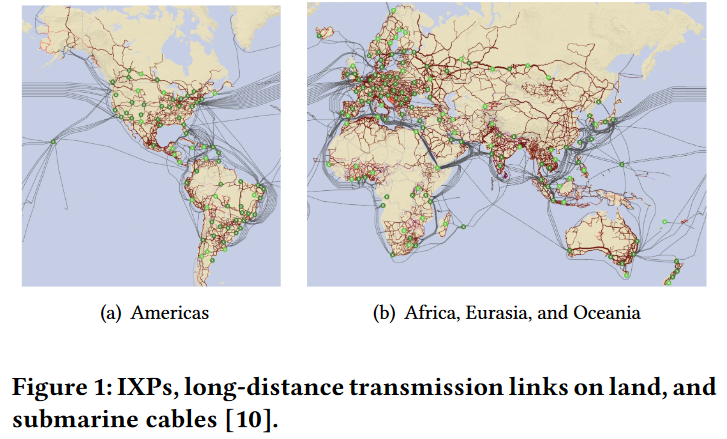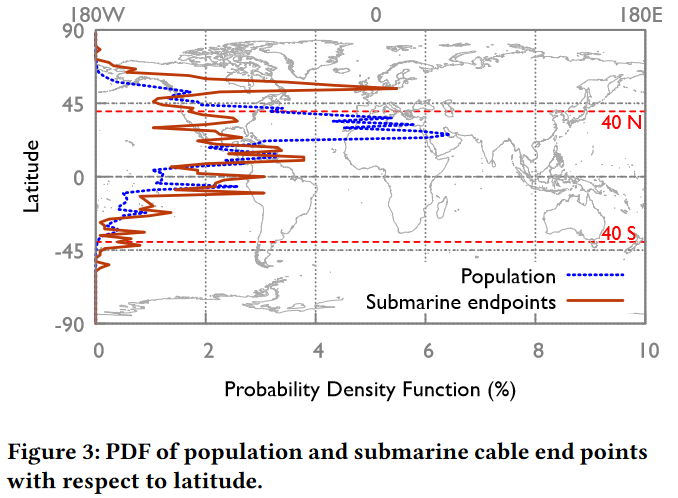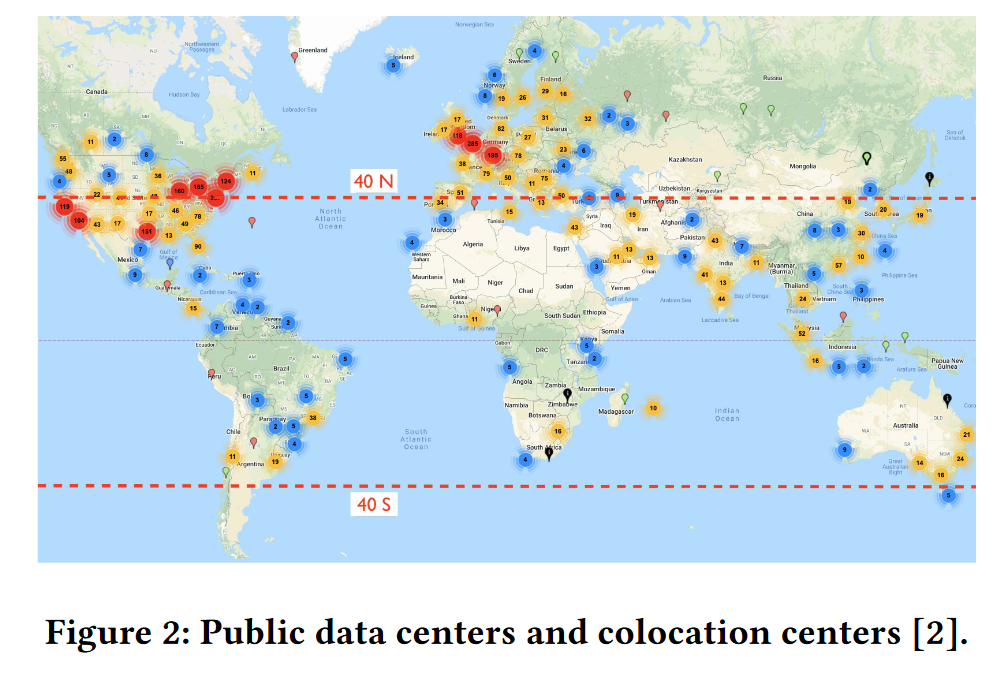Our 96th reading group paper was very different from the topics we usually discuss. We talked about the “Solar Superstorms: Planning for an Internet Apocalypse” SIGCOMM’21 paper by Sangeetha Abdu Jyothi.
Now (May 2022), we are slowly approaching the peak of solar cycle 25 (still due in a few years?) as the number of observable sunspots grows. If you ask how the sunspots relate to the distributed systems, it turns out that there is a pretty significant connection. See, sunspots can produce coronal mass ejections (CMEs) of magnetized and charged particles flying out from the sun, and if our planet happens to be on a collision course with such CME, we may be up for a nasty surprise. When a CME hits the Earth, we experience a “solar storm.” Earth’s magnetic field protects living organisms from the negative impacts of these charged particles. However, the interaction between the particles and the magnetic field can produce current in large/long pieces of conductive materials on the planet. These conductors act as primitive electric generators in the fluctuating magnetic field of a solar storm.
It happens to be the case that people rely on long stretched out conductors all over the Earth — our electric grid. Substantial research has been done on the resilience of the electric grid in the face of solar storms since the currents produced in wires spanning many hundreds of miles can be substantially high to destroy all kinds of electrical equipment and appliances. Our modern communication networks rely on fiber-optic cables, which are nonconductive. However, fiber-optic cables need repeaters to boost the signal along the way; these repeaters need power, so any substantially long fiber-optics link also has a piece of wire to deliver power to the repeaters. This is a big problem for the internet — current induced by the solarstorm in these wires can destroy repeaters, rendering the entire fiber-optic cable non-operative. This paper studies how resilient our internet infrastructure (mainly the cables/links that make up the backbone of the internet) is in the face of solar superstorms.
Solar superstorms are solar storms of very intensity. These events are believed to cause significant damage to power and communications infrastructure. Humanity has lived through them just fine in the past, but there have not been any solar superstorms recently enough to stress our grids and especially modern communication networks. The two most recent large events occurred in 1859 and 1921. In both cases, these solar storms caused telegraph service to go down, and the 1921 storm also brought down the only operational undersea communication link of the time. Technology has advanced a lot in the hundred years since the last event, and we ought to know whether the communication infrastructure can survive. An important point to mention from the paper is that the likelihood of a solar superstorm happening is far from negligible and roughly compare to a “hundred-year flood.”

The paper is not very optimistic about the fate of the internet in the case of a solar superstorm. A significant amount of internet infrastructure resides in the northern hemisphere above 40°N latitude. This happens to be a problem, as the currents induced in conductors increase as we get closer to the poles (this is also a reason we see auroras in Alaska and not Hawaii). The long under-sea cables are especially susceptible. It turns out that out of links/cables connecting the US and Europe, all but one happen to be in the more vulnerable region above 40°N. Another interesting fact is the disparity between internet infrastructure in vulnerable latitudes and the population — we have way a lot of infrastructure there and not as many people. The paper points out Facebook’s infrastructure here as well, as its infrastructure is predominantly located in the northern parts of the northern hemisphere.

Anyway, the paper suggests building redundant links that connect countries and continents in regions below 40°N. Another suggestion is the isolation of links that are in vulnerable regions from other cables that are more south. For example, if an undersea cable induces current due to a superstorm, it is important to ensure that current does not “jump” (at the interconnection point) to another, otherwise unimpacted, cable further south. Another suggestion is powering down the links when the solar storm is coming. The power-off mode does not stop currents from appearing in the conductors, but it may reduce the damage or failure rate and leave more equipment operational after the storm has passed. The paper has a few more suggestions and a few simulations to try different scenarios of link/cable failures, but such simulations are very speculative since we do not know what the failure rate can be in different cables and locations on the globe.
